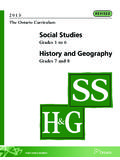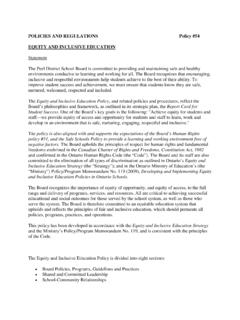Transcription of 2 www.inclusive.co
1 Is so different about eye gaze?Eye gaze technology is perhaps the most exciting, innovative and important piece of assistive technology to hit the special needs classroom in one way, eye gaze should be seen as just another potential access method for those with physical disabilities. In practice, we are seeing users of other access devices, particularly switch users, generally finding eye gaze access quicker, easier, less fatiguing (more so with practice) and a lot less restrictive. A shift from switches to eye gazeThis is particularly important for AAC users, where speed and flexibility are important factors in communication. We have seen a huge shift to individuals using eye gaze to access communication software that once used switch access. With a massive drop in the price of eye gaze technology in recent years, we are beginning to see special schools and services around the globe adopt eye gaze devices to complement their fully inclusive , accessible classrooms and resource kits.
2 We are starting to see schools use eye gaze more creatively, and use it with a range of their favorite software and websites, not just with specialist eye gaze , eye gaze does differ from other access devices - it can be used as an OUTPUT device and used to control, but we can also, with the right software, use it to gain insight into what is INPUT, the information the student is processing visually. Observe what our students seeEye gaze technology has been used in this way for many years in the research field, but it is only now we are able to use this technology in the classroom to give teachers and therapists objective and functional feedback and analysis on students' looking behaviours. With the right tools we can start to observe what our students see, attend to and track on screen; what they notice and don t notice, what they prefer to look at and what sense they make of what they see.
3 These are fundamental skills that most of us have not had the tools to assess or look at in detail before now. Such understanding of our most complex students could lead to changes in our teaching practice and open up wider opportunities for our students to interact and Gaze in the ClassroomIntroduction3 AssessMany students with complex physical and learning needs also have additional visual difficulties that can remain undiagnosed or unconsidered during their years in education. Eye gaze technology can now give us the ability to objectively observe what a student can attend to and notice on screen. What color, size and type of image can they detect? Can they track moving objects? What are their eye movement patterns like? Do they scan the choices on screen? Can they compare and discriminate between images?
4 We are also interested in what images or parts of images students prefer to look at given choice, where they look in response to questions or prompts. Eye gaze technology can help us objectively record and review where a student looks to gain insight into their thinking the titles in the inclusive Eye Gaze Learning Curve include powerful, but easy to use Analysis tools. The analysis tools are my personal favorite aspect of the software. They are easy to understand and are great for sharing progress with parents. I particularly liked the heat maps and would find these useful for assessment of eye tracking. It also helped me to see what the students found reinforcing which is very important to motivate communication. Karen Carmody, Speech and Language TherapistIncludeEngageThe ultimate aim with any student using alternative access is to enable the use of the same resources and software as their peers.
5 Switch software, though quite expansive, will remain limited, with the range and potential of mouse and touch accessible software far surpassing it. Eye gaze devices, such as myGaze with EyeMouse Play have been specially designed to easily emulate mouse access, thus widening the range of software titles available to the student using eye gaze just has to look at the screen to play the next verse of the , as with any access method, some practice is needed to use eye gaze with control and accuracy, there is often not the same time investment needed in learning pure access skills compared to other methods. Students can jump quickly to using the technology to achieve educational the student is at the level of learning cause and effect or beginning to make choices, teachers and therapists now have the ability to let eye gaze students access their favorite classroom software and join in with lessons at an appropriate level.
6 We use it with SLD and PMLD students and pupils with visual difficulties to help develop vision and visual awareness. We used it across the school pre-school, primary, secondary and also 16+. Iveta Power, ICT Coordinator, Chailey HeritageSome students with complex needs can appear to be uninterested in using technology or looking at screens. This could be for a variety of reasons; unrewarding, effortful or frustrating use of technology in the past, the content is not interesting or meaningful or perhaps they are at an early stage of interaction. The first place to start is fun! Providing a stimulating environment may be one answer. Some schools are starting to include eye gaze technology in their sensory environments, controlling interactive screens and floors with just a most individuals need frequent practice and appropriate support to develop the skills needed to use formal communication or recording packages.
7 Providing opportunities to play a wide range of different games and fun activities will help refine access skills and encourage students to want more. Get the student motivated then learning will playing Eye Can Fly This is a chap who has sat in his chair since he was 19 with very little to occupy himself with. This game has changed not only his life in some small way but also his parents' lives because they are seeing him playing an activity that looks like a similar game that their grandkids play on the Wii. I personally find this title to be one of the most exciting to come out in years." Sean Carroll IT/AT Consultant. Feedback Eye Can FlyEmpowerMoving on from early interaction skills, eye gaze devices have the capacity to give you full PC access to really empower your student.
8 Launch and control standard applications such as Word, surf the Internet, communicate by email, Facebook or Skype, even control your environment, the possibilities are Gaze in the myGaze Learning Wheel3. MotivationIt is important when introducing any new technology to a student that their first experience is positive and fun. Choose activities that match their interests, give immediate feedback and automatic success. Try to avoid too many prompts or questions and allow the student plenty of time to explore and experience eye gaze by themselves. Try to provide a variety of activities and play them frequently for short periods. If you are not sure what motivates your student, make this one of your first aims and try a variety of images, sounds and video and observe what captivates them most using eye gaze analysis AimsHave a clear idea of your ultimate aim for the student using eye gaze.
9 Is it to assess, include, engage or empower the student? Students may have more than one aim you may want to initially assess a student s visual skills and also include them in using simple cause and effect software or you might want to engage a user who has switched off and empower them to control their own environment. Choose software that provides analysis tools to allow you to make baseline and ongoing assessments of the student s skills and progress so that aims and objectives can be referenced and adjusted to consider when choosing an eye gaze systemLearning objectives make up the iris and are categorized according to the skills you want to teach this includes the software or content of your essential components of an eye gaze system. At the very centre is the tracker device (myGaze) which detects and follows your eye gaze.
10 These are bound by overall aims of what you hope you and your student will ultimately achieve with eye gaze; assessment, inclusion, engagement or the tracker is the interface software (EyeMouse Play) which enables you to choose mouse functions and control settings for calibration and interaction. 42. Learning StageIdentify your teaching objectives and the stage of learning your student is at. Like any other access method, users will need some time and practice in developing their accuracy and control of eye gaze. Some students will quickly work through all the stages of learning to become competent at eye gaze, while others will need longer and specific resources suited to their learning level. The table above gives you guidance in how specialist eye gaze software can be categorized into learning stages to meet different teaching objectives.









